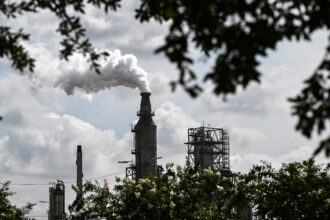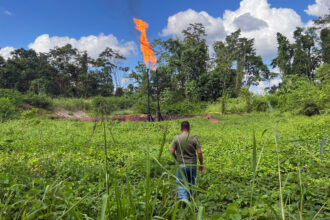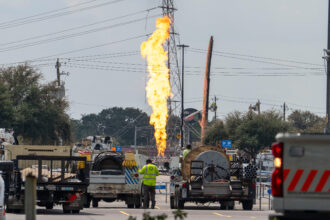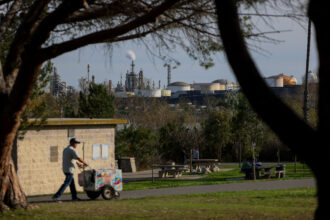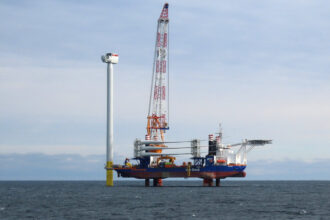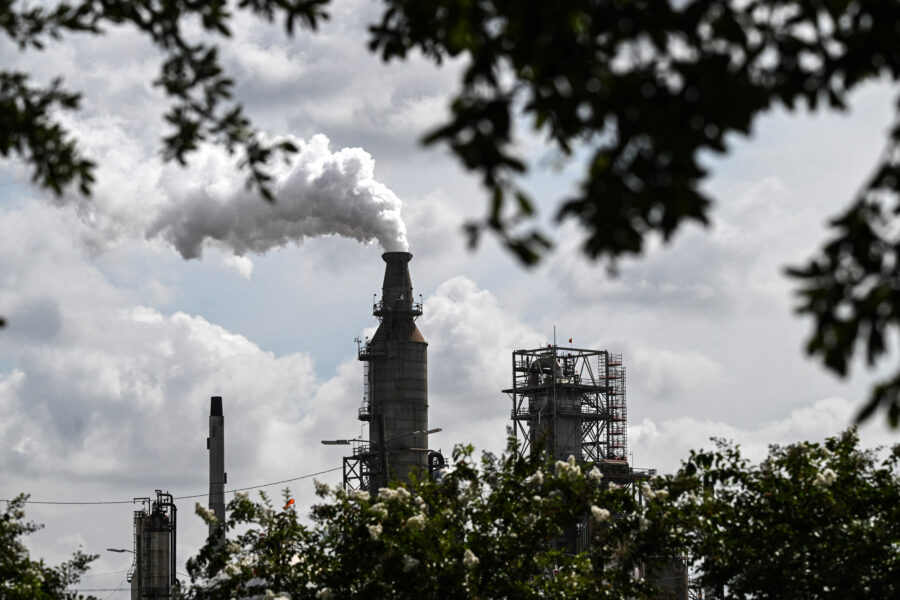It’s official: New coal lost its luster in 2008.
According to the Sierra Club, two dozen proposed new coal-fired power plants were defeated or abandoned this past year, "laying the groundwork to fundamentally change the way the U.S. rebuilds and repowers itself."
Global warming was a significant factor.
Investors yanked money out of the sector amid concerns that coming carbon regulation would add to already soaring costs of new coal facilities. States refused permits for failing to address CO2 pollution concerns.
The full highlights of the "year in coal" are here (pdf). They include:
Utah — Deseret Power’s Bonanza Plant
This decision may prove to be the most significant development of 2008. On November 13, in response to Sierra Club’s lawsuit over the proposed Bonanza Generating Station, the U.S. EPA’s Environmental Appeals Board (EAB) rejected all of EPA’s excuses for failing to regulate greenhouse gases from coal-fired power plants.
Georgia — Longleaf Coal Plant Permit Rejected on CO2 grounds
In the first ruling of its kind, a trial judge in Georgia agreed with the Sierra Club and ruled that the permit be remanded because it failed to limit emissions of carbon dioxide.
Utah — Local Residents Win Ballot Initiative on Coal Plant
Local citizens of Sevier County, Utah won a ballot initiative election in November 2008 that will require a local vote before any coal plant can be built in the county. The ballot initiative was opposed by the industry and initially thrown out by a state trial court, but then was saved by a last minute order from the Utah Supreme Court.
Dynegy Rethinks Coal Power
Earlier this month Dynegy Inc., the largest coal plant developer in the nation announced it is now re-evaluating all eight of its planned coal-fired power plants, including two that are under construction, because of difficulty getting permits, uncertainty about climate regulation, and the high cost of capital.
In some ways, big coal’s losses have been gains for clean energy. The year saw a 20 percent increase in new geothermal projects under development in the US, and a record expansion in the wind industry.
Looking back further, Sierra Club notes that the Bush-Cheney Energy Plan of 2001 included building over 150 new coal-fired power plants. The good news is that more than 80 of those proposals have been defeated or abandoned, while dozens more have been delayed or sent back to the drawing board for failing to meet minimum pollution standards.
Bad news is that plans for some 80 new plants are still in the works across the nation. Which begs the question — what will be in 2009?
The Sierra Club predicts that Michigan will be at the center of the coal battle during the coming year. It has 19 existing coal-fired power plants — and more proposed new facilities than any other state. Close behind will be Texas. It too has a number of new coal plants on the books that are awaiting a green light to get off the ground.
Keep a close eye on Kansas, as well. The state was the ground zero of the coal issue in America in 2008, and big coal is still determined to build two new coal plants there, despite three vetoes by Governor Kathleen Sebelius.
For more details on the coal issue in 2008, see some of SolveClimate’s coverage from the year:
- A Tale of Two Disasters: Coal Ash and Tar Sands Tailings (December 2008)
- Dam Breach in Tennessee Releases Tsunami of Toxic Coal Sludge (December 2008)
- Clean Coal, Clean Tar: Media Not Swallowing It Anymore (December 2008)
- The True Cost of Coal Revealed (December 2008)
- Victory for Appalachia: Bank of America to Stop Financing Mountaintop Removal (December 2008)
- Big Coal Launches Last Minute Smear Campaign Against Obama (November 2008)
- Wisconsin Coal Plant Rejected for Staggering Costs (November 2008)
- EPA Utah Ruling to Stymie New Coal Plant Development – All Over America (November 2008)
- Breakthrough: Investors to Find Out True Financial Risks of Coal (August 2008)
- Georgia Judge Kills State’s 1st Coal Plant in 20 Years, Makes Climate History (July 2008)
- How Coal Is Not Cheap and Why It Never Will Be Again (July 2008)
- Coal: Hemorrhaging American Jobs Since the 1980s (July 2008)
- Coal Lobby Outspending Solar Industry 25 to 1 (June 2008)
- Poll: 94% of Americans Want Solar Energy Future, 3% Want Coal (June 2008)
- Judges Shoot Down “Big Stone Coal Plant,” Say Renewables are Cheaper (May 2008)
- Strike Three For Kansas Coal? (May 2008)
- Report: New Kansas Coal Plants Will Lock In Decades of Rising Electricity Prices (March 2008)
- Governor of Kansas Standing Tall at Ground Zero of Dirty Coal (March 2008)
- The Coal Train to Nowhere (February 2008)
- Party’s Over: Coal Prices Up 143%, Never Again To Be Cheap (February 2008)
- In Best Case, "Clean" Coal Is Still Two Decades Away (February 2008)
- DOE Timelines Show "Clean" Coal Will Be a Long Time Comin’ (February 2008)
- DOE Report: Renewables Currently Cheaper Than "Clean" Coal (February 2008)
- Dirty Coal Plays Peek-a-Boo in Kansas (January 2008)
- Ding Dong, Clean Coal Is Dead (For Now) (January 2008)
- Air Force Use of Liquid Coal & Tar Sands Fuels Illegal (January 2008)
About This Story
Perhaps you noticed: This story, like all the news we publish, is free to read. That’s because Inside Climate News is a 501c3 nonprofit organization. We do not charge a subscription fee, lock our news behind a paywall, or clutter our website with ads. We make our news on climate and the environment freely available to you and anyone who wants it.
That’s not all. We also share our news for free with scores of other media organizations around the country. Many of them can’t afford to do environmental journalism of their own. We’ve built bureaus from coast to coast to report local stories, collaborate with local newsrooms and co-publish articles so that this vital work is shared as widely as possible.
Two of us launched ICN in 2007. Six years later we earned a Pulitzer Prize for National Reporting, and now we run the oldest and largest dedicated climate newsroom in the nation. We tell the story in all its complexity. We hold polluters accountable. We expose environmental injustice. We debunk misinformation. We scrutinize solutions and inspire action.
Donations from readers like you fund every aspect of what we do. If you don’t already, will you support our ongoing work, our reporting on the biggest crisis facing our planet, and help us reach even more readers in more places?
Please take a moment to make a tax-deductible donation. Every one of them makes a difference.
Thank you,





